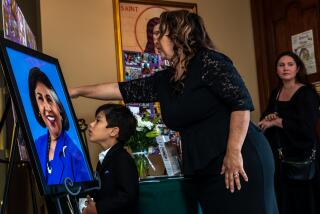Saluting the Rosies
I can’t remember when I first learned about Rosie the Riveter. She’s always been there, like the national anthem and baseball. So I was surprised, two years ago, when my 13-year-old friend Lara said that she thought the iconic image from the 1940s was an old ad for power tools.
It was a Saturday morning, and Lara had come by as I was pulling a piece of spongy wood trim off the back window of my beach shack. “Just trying to stay ahead of decay,” I said, and asked if she wanted to help.
She picked up my cordless drill and posed with flexed bicep. “We can do it,” she said.
“You’re a Rosie fan,” I said.
“Who?”
“Rosie the Riveter — you know, ‘We can do it!’”
Lara shrugged. “I saw it on your dish towels,” she said.
My dish towels. She liked the graphics, the tough chick. Lara can relate because, like Rosie, she’s strong and confident and sees no limits to what she can accomplish.
The women who built the steady stream of replacement warships and aircraft deployed in World War II are elderly now. The youngest of them is more than 80 years old. While we are often reminded that we’re losing our veterans at a rapid rate, less is said of the mothers, sisters and lovers who equipped the troops and made essential contributions on the home front. They are the great- and great-great grandmothers of the young women I see on the bus, texting friends. I’ve often wondered if today’s daughters know the stories. According to Lara, “Not really.” Nearly 70 years have passed since Pearl Harbor was attacked.
American women were President Franklin Roosevelt’s secret army, and Hitler gravely underestimated them. Like their soldier brothers, they too left ordinary lives to do extraordinary things. They worked in difficult and dangerous conditions, often at the limits of their physical ability. They accomplished tasks they had never imagined having the training or strength to do. They were the home half of the Greatest Generation. They helped save the world.
Many of these women suddenly found themselves single, working parents at a time when stay-at-home moms were the norm. For some the change in marital status was permanent — part of the war’s terrible toll.
It was a time of change for minority women too. They often traveled far for an opportunity to earn more than the daily wage of the domestic. They joined an integrated workforce, bound together by common cause. They excelled.
Significant and lasting social change came in other ways. The industrialist Henry Kaiser (with some encouragement from Eleanor Roosevelt) broke new ground supporting working mothers, providing day-care, healthcare, even a war rations office on site, to help employees manage the demands of job and family. The healthcare plan that Kaiser first offered his workers for 50 cents a week was made available to the public in 1945 and survives today as Kaiser Permanente, with more than 8 million members.
Although housewives and mothers were new to the wartime workforce, the majority of women drawn to industry needed the income and had been working before the war, but in unskilled, low-paying positions. As they gained skill and confidence, they believed they’d be similarly employed postwar, but then they found themselves denied good-paying jobs simply because they were women.
When the soldiers came home and women surrendered their places in industry, not all were happy to return to their old work, even though they had been told from the start that the veterans would need their jobs. But traditional roles and segregated society had become unfamiliar.
I’ve written about some of these women, following their lives through arrival in the shipyards, through industrial accidents and through the loss of their soldier relatives. Their influence and changed worldview are reflected in their daughters’ commitment to gender and racial equality, and in the activism of youth in the 1960s and ‘70s. The Rosies taught their kids that they too could change the world.
On Oct. 25, 2000, President Clinton signed a bill establishing the Rosie the Riveter / WWII Home Front National Historical Park — at the site of the former Kaiser shipyards and near other wartime industrial sites — in Richmond, Calif. Completing the 15-year implementation plan for the park will require public and private investment. The Rosie the Riveter Trust assists the National Park Service with fundraising and manages an online store with gifts that include a Rosie action figure.
We owe a debt of gratitude to the Rosies, especially those of us who found more open doors in life than our mothers had. Rosie was with me when I worked my way through college. She was with me when I learned to adjust the valves in my Volkswagen’s engine, climbed Mt. Kenya and built the beach shack I now call home.
Recently, Lara, now 16, told me about a visit she made to relatives in Canada, and how she helped them lay a new hardwood floor. She spoke enthusiastically about learning to measure and cut wood, to nail on an angle. I imagine her building her own beach shack someday, and when we all come by to warm it, I will bring her new dish towels, silk-screened with the image of Rosie the Riveter.
Therese Ambrosi Smith is the author of “Wax,” a coming-of-age novel about the women in the 1940s.
More to Read
A cure for the common opinion
Get thought-provoking perspectives with our weekly newsletter.
You may occasionally receive promotional content from the Los Angeles Times.






